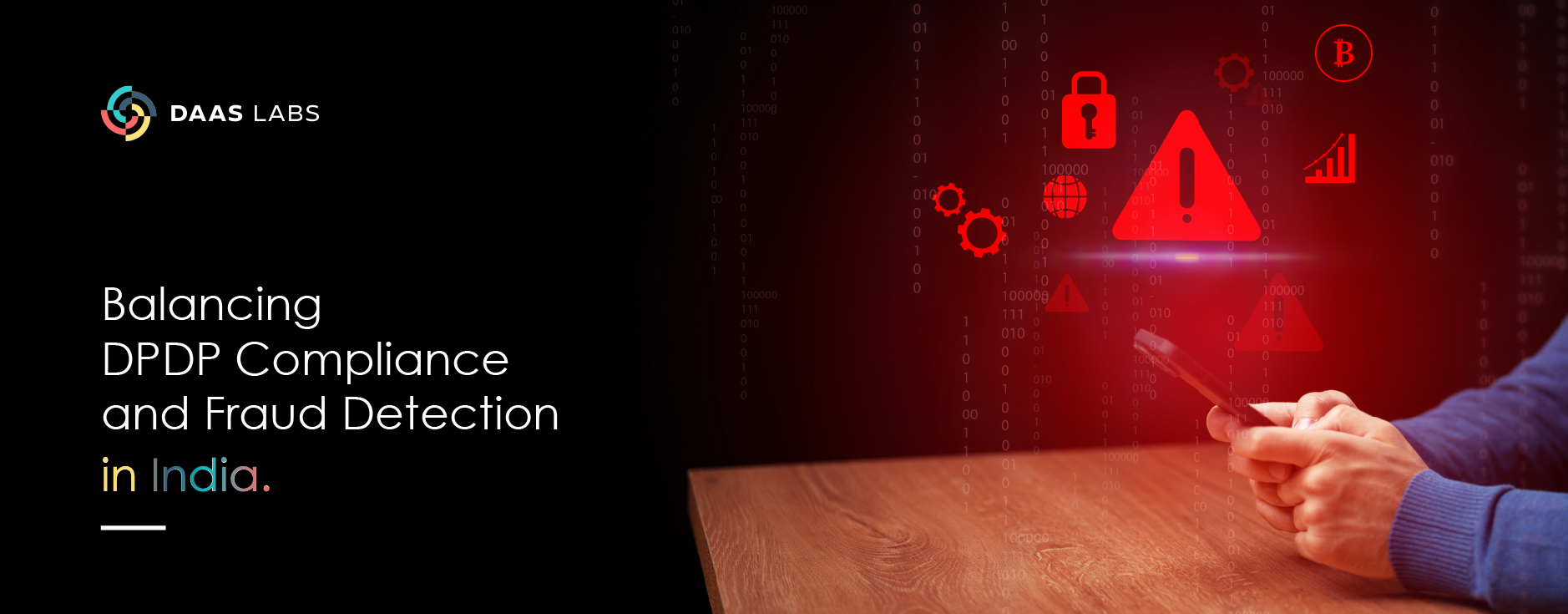
Fraud doesn’t respect borders. Data does.
With the rollout of India’s Digital Personal Data Protection Act (DPDP), enterprises now face a critical challenge: how to build compliant fraud detection systems that still have the intelligence needed to stay ahead of criminals.
At the heart of the issue lies a paradox:
- Fraud detection thrives on global patterns.
- DPDP restricts data flows to within India’s borders.
The outcome? You get compliance but risk weaker detection.
This blog explores what India’s DPDP means for fraud detection, why this matters, and how DAAS LABS helps enterprises find the balance.
The Global Nature of Fraud
Fraud is borderless. Consider these examples:
- A credit card compromised on a US-based e-commerce site is used in Delhi the next day.
- A fraudulent loan application pattern seen in Singapore shows up in India six months later.
- A phishing attack tested in Europe spreads worldwide in a matter of weeks.
Fraud detection models rely on data diversity and global visibility to catch these threats early. By recognizing cross-border trends, they can stop attacks before they spread.
When data can’t cross borders, those vital connections are harder to make.
The DPDP Balancing Act
India’s DPDP law is a landmark step for data sovereignty and citizen privacy. It ensures:
- Sensitive personal data remains within Indian borders.
- Enterprises are held accountable for responsible data use.
- Trust is built between consumers and businesses.
But here lies the dilemma:
- Regulation demands local storage and sovereignty.
- Analytics demands data diversity and global intelligence.
Fraud detection systems risk becoming more compliant but less powerful.
How Enterprises Can Adapt
This doesn’t have to be a zero-sum game. With the right architecture, enterprises can maintain compliance and preserve intelligence.
Here are four approaches:
- Localize Storage, Not Intelligence
Data stays in India, but advanced methods like federated learning allow global fraud detection models to learn from patterns across regions — without moving raw data across borders.
- Build Hybrid Fraud Frameworks
Use local data lakes for India-specific compliance and supplement them with anonymized, aggregated global insightsto keep detection sharp.
- Governance-First Design
Fraud detection models must have lineage, audit trails, and regulatory checkpoints baked in. This reassures regulators while enabling secure analytics.
- Compliance + Fraud Dashboards
Give compliance officers and risk leaders real-time dashboards that merge fraud KPIs with regulatory metrics. This ensures visibility, accountability, and faster decision-making.
The DAAS LABS Approach
At DAAS LABS, we understand the tension between regulation and analytics. Our services are designed to:
- Enable compliance-first data architectures aligned with DPDP.
- Deliver dashboards and reporting that balance fraud detection with regulatory oversight.
- Implement hybrid and federated models so enterprises don’t lose intelligence when data borders tighten.
- Provide industry-specific fraud analytics for BFSI, fintech, telecom, retail, and healthcare.
“We help enterprises build compliant, high-performing fraud detection models within local constraints. You shouldn’t have to choose between compliance and effectiveness — you need both.”
Final Word
India’s DPDP is more than just another regulation. It’s a turning point in how data, sovereignty, and analytics coexist.
For fraud detection, it’s both a challenge and an opportunity:
- A challenge because visibility narrows.
- An opportunity because smarter architectures, governance-first frameworks, and new analytics models can create better, more resilient systems.
At DAAS LABS, we believe the future of fraud detection will belong to enterprises that embed compliance as a design principle, not a constraint.
Is your fraud detection ready for India’s DPDP era?
Let’s talk.
